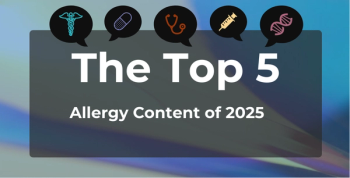
Implications of SMN2 Copy Number: A Key Factor in SMA Outcomes?
Key Takeaways
- Early treatment in SMA provides benefits, but children with two SMN2 copies may still experience significant motor delays and disabilities.
- Infants with two SMN2 copies showed delayed motor milestones, such as sitting and walking, compared to those with three or more copies.
This recent study sheds light on a remaining gap in spinal muscular atrophy (SMA) research and care considerations: the impact of spinal motor neuron (SMN) copy number.
Although earlier treatment initiation demonstrates ongoing clinical benefits in
SMN2 copy number can carry great implications for patients with SMA. The majority of SMA cases result in the absence or loss of SMN1, leaving patients and their motor neurons to relying on SMN2. Many prior studies have outlined the inverse relationship between disease severity and the number of SMN2 copies an individual possesses. This body of literature, spotlighted in a 2016 study in
In their study, which evaluated outcomes associated with early-treated infants with SMA, data from 12 academic medical centers (11 in the US and 1 in Australia) were gathered via infants’ charts between August 2018 and December 2023.1
A total of 66 infants with SMA—with 2 to 4 confirmed copies of SMN2—were in included and had their motor conditions assessed according to the Children’s Hospital of Philadelphia Infant Test of Neuromuscular Disorders (CHOP INTEND). Additionally, this group received treatment with onasemnogene abeparvovec (Zolgensma) or nusinersen (Spinraza) no later than their sixth week of life, and were 12 months or older at the time of their enrollment.
Prior to treatment, baseline ages ranged from 1\ to 41 days, and those with 2 copies of SMN2 registered lower CHOP INTEND scores compared with infants with 3 or more copies. SMA findings were detected in 38% (n = 25) of infants on or before their treatment day, including the need for respiratory support (n = 1), indications of bulbar weakness (n = 3), reduced spontaneous movements (n = 9), lack of deep tendon reflexes (n = 11), and hypotonia (n = 23).
Nineteen (29%) received treatment with nusinersen while the remaining 47 (71%) received onasemnogene abeparvovec. On average, treatment was initiated by the 26th day of life, with 9% (n = 6) beginning before their second week of life, 45% (n = 30) between weeks 2 and 4, and 45% (n = 30) between weeks 4 and 6.
Motor Milestones and Influence of SMN2 Copy Number
There were 11 children with 2 copies of SMN2 (17%) who were not able to walk by their final assessment; however, the researchers noted that the majority of enrollees could walk independently and every enrollee achieved independent sitting. The later a child could sit independently, the later they were expected to walk—if at all—but achieving this milestone on time did not mean they would continue developing as expected. Before treatment, if an infant was symptomatic they were less likely to walk or walk on time compared with those who received presymptomatic treatment.
The authors witnessed children with 2 SMN2 copies exhibit gross motor delays across the board compared with children possessing at least 3 copies. Children with 2 copies, on average, achieved sitting later than those with 3 or more copies (9 months vs 7 months; P < .001). Those with 2 copies also walked at a later age (19 months vs 13 months; P < .001), were less likely to walk on time (9 children vs 13 children; P < .001), walked late (14 children vs 2 children; P < .001), or did not walk (11 children vs 0 children: P < .001).
Furthermore, CHOP INTEND results revealed that no children with scores under 34 achieved walking on time.
Need for Support, Hospitalization
Nocturnal noninvasive ventilation (NIV) was necessary for 17% (n = 6) of children with 2 SMN2 copies, and 11% (n = 4) of the group with 2 copies also needed a gastronomy tube for feeding purposes. For those with 3 or more SMN2 copies, no NIV or supplemental feeding was recorded.
Overall, there were 19 children (29%) who experienced at least 1 hospitalization—16 of whom possessed 2 SMN2 copies. Respiratory or feeding issues, or the need for intensive care, were common reasons for this.
Although their findings bolster support for early treatment initiations in newborns with SMA, the authors conclude by noting how these results underscore the “incomplete rescue of motor phenotype” in SMA. They hope their study can inform future research efforts to explore the implications of SMN2 copy number and navigate the most beneficial interventions to optimize outcomes for children possessing 2 copies.
References
1. Goedeker NL, Rogers A, Fisher M, et al. Outcomes of early-treated infants with spinal muscular atrophy: a multicenter, retrospective cohort study. Muscle Nerve. 2024;70(6):1247-1256. doi: 10.1002/mus.28267
2. Butchbach ME. Copy number variations in the survival motor neuron genes: implications for spinal muscular atrophy and other neurodegenerative diseases. Front Mol Biosci. 2016;3:7. doi:10.3389/fmolb.2016.00007
Newsletter
Stay ahead of policy, cost, and value—subscribe to AJMC for expert insights at the intersection of clinical care and health economics.







































